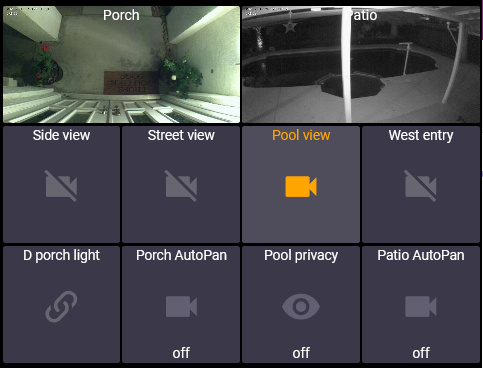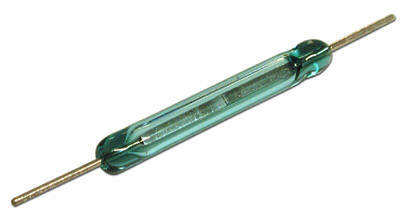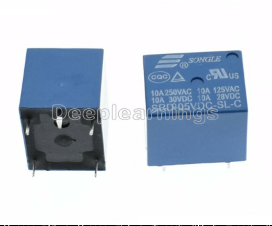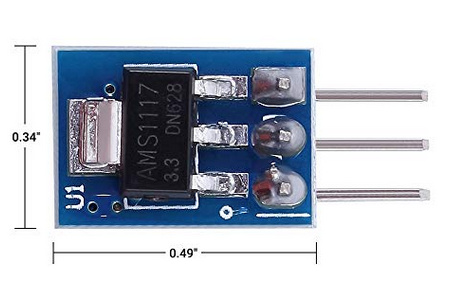Hi to all!
Is anyone using DLink WiFi cameras (motion dection mainly) in your HE automations?
Where can I find a way to link them to the HE hub?
(Models 8000LH and 8010LH)
Hi to all!
Is anyone using DLink WiFi cameras (motion dection mainly) in your HE automations?
Where can I find a way to link them to the HE hub?
(Models 8000LH and 8010LH)
Do they support IFTTT? That's the only way I can readily think of, because it doesn't look like DLink has a published cloud API to use.
I think you can connect to some DLink cameras using ONVIF or RTSP if so you could buy Blue Iris to use as a local NVR for them and it can trigger a Hubitat virtual motion object via the built-in Maker API. You can download a trial of Blue Iris but will need an always on Windows machine to run it on. If it works with your cameras you can then purchase a license for $70
Thanks @Terk
It’s just that I dont want to leave a turned on computer just to make a camera mimic a USD 10 PIR sensor...
There must be a way to “driver” them into the HE... code writers?!? Ideas?
@gusthepenguin you can go to this topic may help you out?
Putting live video from (almost) any web/ip camera into your dashboard
What about an old Android phone/tablet. HE isn't designed for image processing.
@Angus_M has written an app to do this using tinycam [Release] - an app for AI camera/webcam motion/object detection/recognition (motion, person, pet, vehicle, face using tinyCam)
Supported IP cameras | tinyCam Monitor.
http://forums.dlink.com/index.php?topic=37360.0
Yeah, it looks like many D-link cameras are supported by tinyCAM (pls check your models tho). It's definitely a good solution using the app mentioned above. But you do need an always-on device (tablet, phone etc) to run tinyCam.
Hi, just to add my $0.02 here.
I have several DCS-5222L PTZ cameras which I had integrated with ST using a community DTH. Sure, the cameras aren't 4k resolution but for 50 bucks you do actually get a lot of camera and features. Anyway, all I really want from the camera was the following:
1) recording:
I'm running a lan-only Filezilla FTP server to which the cameras upload stills and vids, as per onboard configuration of the cameras. I can access these on the go from a little Apache webserver
2) camera pan and tilt control:
Rather than porting the entire Smartthings DTH, I extracted the URL's necessary to order the camera to move to a specific position. I built these into a webcore piston, which is triggered by some virtual switches, again controlled by the tile interface of my choice: ActionTiles (coming soon to Hubitat, yay!)

For now I've got a dashboard panel on HE (ugh). The control URL's for the camera movement looks like shown below. There are others commands allowing for manual movement, etc but I haven't gotten around to implementing those just yet.
http://camadmin:password@ca.me.ra.ip/cgi/ptdc.cgi?command=goto_preset_position&index=X
Where X is a number between 0..31 corresponding to positions you've configured in the camera's web interface.
The home position has it's own distinct command
http://camadmin:password@ca.me.ra.ip/cgi/ptdc.cgi?command=go_home
Note, although the camera allows for creating other users, one has to use an admin account to run any commands, PTZ included.
I'll post the piston later if anyone's interested, yet it's super simple, just a set of
IF vSwitch n turns on THEN send GET web request with the command above to camera ip
I've added some additional tomfoolery to make the vSwitches behave like radio buttons.
3) Motion detection
I wanted to have an event if the camera detects motion. Unfortunatly 50 bucks only goes so far as the camera can only trigger recordings and such when there's motion. It does however have an IO port on the back with 4 pins and it can be configured to set the outport pin hi (5v) when motion is detected. What I did was grab a spare contact sensor and repurposed it. It's important that the contact sensor has a reed-relay as it's sensor inside:

Most of the cheap ones like NEO NAS-DS01, Sercomm SW-DWS02N and Monoprice 24259 all have reed relays, but multisensors like the Samsung Multisensor STS-MLT-250 are not very applicable as they use a hall-effect sensor embedded on a chip)
Second thing: The IO port provides 0 or 5V when active and one can draw about 200mA from it according to factory specs. Most contact sensors run off a 3V battery, i.e. sending a 5V signal into them, probably would result in EBS signals (Expensive Blue Smoke), so I threw a 5V relay in between the Z-wave sensor and the camera

Btw these guys can be had on ebay for a song and only draw about 90mA/0.45W, so there's no need for a load resistor, however do remember to put an IN4001 diode over the coil to avoid any spikes from frying the camera's IO port.
The reed relay was surgically removed with a sledgehammer (kidding) from the contact sensor, and the relay is connected via the Normally-Closed and Common terminals in it's place. I could probably have used a transistor, however I personally like having that little audible >click< as feedback from the relay when motion is triggered.
Last item: Power. Since the camera's IO port provides a 5V out anyway I figured it would be wasteful to keep feeding the contact sensor batteries. Instead I put in one of these 3.3V buck converters,

which you can get in a 5-pack on Amzaon for about $11 (btw a word of warning with these buck converters. Their maximum input voltage is 12V and not an iota more. Anything above that and they'll die instantly and take whatever lo-voltage device you've connected on the output side to the grave with them. It cost me a couple of ESP8266's to learn that lesson  However anything up to 9-10V, no problem.)
However anything up to 9-10V, no problem.)
The D-Link camera housing is unfortunately too tight to fit all of this stuff. so I opted for an small external box. Here's what it looks like inside (red light is from the buck converter). The three wires are IO-out, 5V and GND from the camera.
If anyone's interested I'll throw together a fritzing schematic together, that said this build is pretty simple.
Hope this helps someone
/Max
PS: Can anybody offer help rewriting a contact sensor driver to act as a motion sensor driver? I'm currently using webcore for the conversion and although it's oodles faster than back on Smartthings, I still feel it's ineffective.
This topic was automatically closed 365 days after the last reply. New replies are no longer allowed.